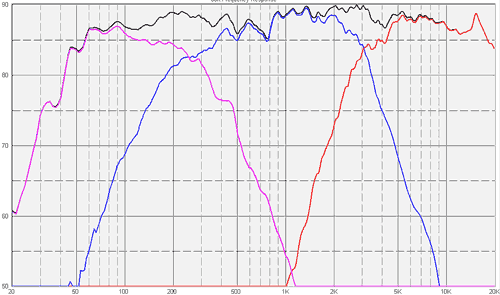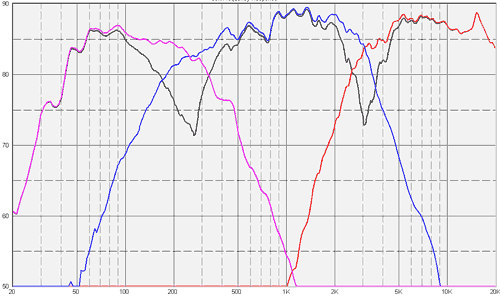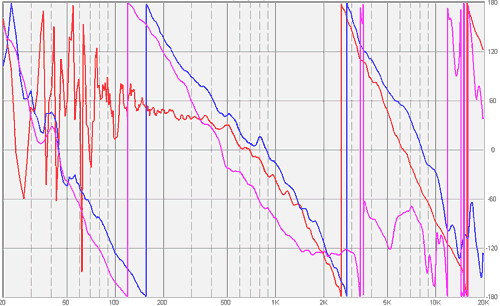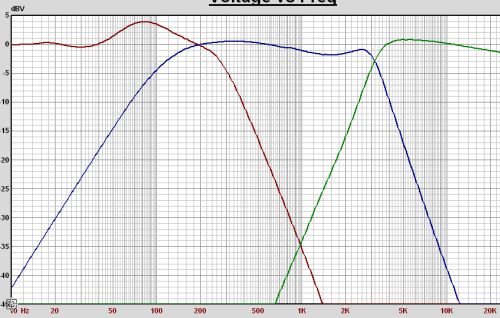2006, Q3 intermezzo
Jon's filter intermezzo
Finally, after many months, me and Korneel had sufficient time to construct Jon Marh's filter. Based on the anechoic measurements, Jon developed an impressive filter and gave a lot of useful hints. Have a look at Jon's htguide posting for the full story.The filter contains quite some components to align phases , and obtain a response that is inspired by the Avalon Eidolon curves.


The curves show quite some voicing at 1-3 kHz, and from 150-350Hz.


The phase has a small offset compared to eachother, but the units seem to add nicely.

The electrical behavior show a large bump at 80Hz (boom box danger), and also a bit at 4-5kHz.

All inductors are air-based chokes, and capacitors are MKP. Except for some of the larger values (> 100uF, and > 10mH). This will affect the performance somewhat, but I'm convinced that a good filter topology will sound decent with moderate quality components as well.
So how does it sound?
Good points are the "speed", good pinpointing, well defined treble (no sibiliance, though brilliant), a bit more controlled bass (though a bit oinky), and the lack of resonances.
Bad points are the timbre (too much voiced in the middle frequencies, an overall thin sound lacking body), lack of spatial depth, and the idea of listening to a "two speaker system" (as if the tweeter is decoupled from the rest, and goes its own way). I suspect the off-axis response (bold) to play a role in this. As can be seen from the following figure, the bass and high treble drop significantly in level, but at other points in the curve the loudness almost stays the same.

Overall, the filter sounds "thin", and is not so "musical" or "involving". I suspect quite some modifications are required to get this filter more coherent, including efficiency and slope adjustments over the frequency range. This is not a surprise, as Jon developed the filter based on the curves only, not having had the opportunity to listen to the units, and the way the integrate. I also realize this filter is built with below-average components, but alternative filters have resulted in better sound using these components.
So, what did we learn from this filter?
- I think it is a good idea to use steeper slopes for the tweeter (it sounds "cleaner" this way), but to prevent a high-Q around the 5kHz region (makes the tweeter sound "separate").
- I'm convinced that the midrange units needs some baffle step compensation. Listening to the woofer in isolation always reveals it sounds "thin", has no "drive" or "push", and gets a metallic edge when pushed too far into the low-mids. So, the midrange units will have some obligations in that range.
- The peak in the electrical response for the woofer should be removed, though this will not be easy considering the high impedance peak of the woofer, in combination with the previous requirement limiting the cross-over frequency to <300Hz.
Postscript
I've tried to contact John multiple times (before publishing the above results) to discuss my findings, and to elaborate on some potential next steps, but he doesn't respond to my emails or posts anymore... I have no clue why, I've asked if there are any misunderstandings, but there is just silence.This leaves me no other option then to close this chapter with a bad feeling.
next->